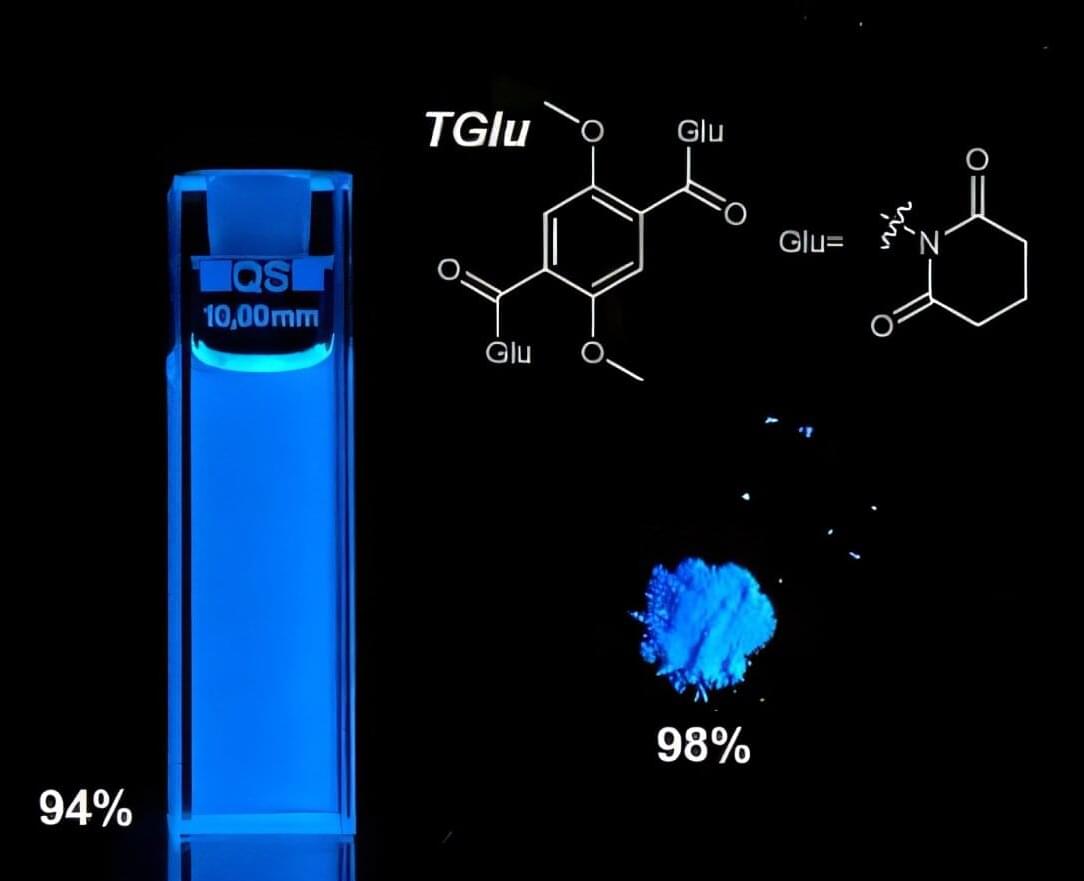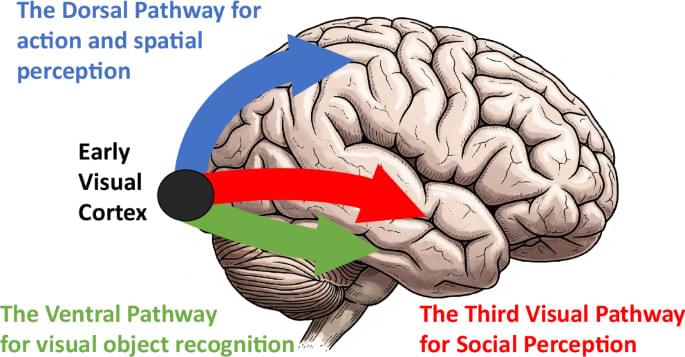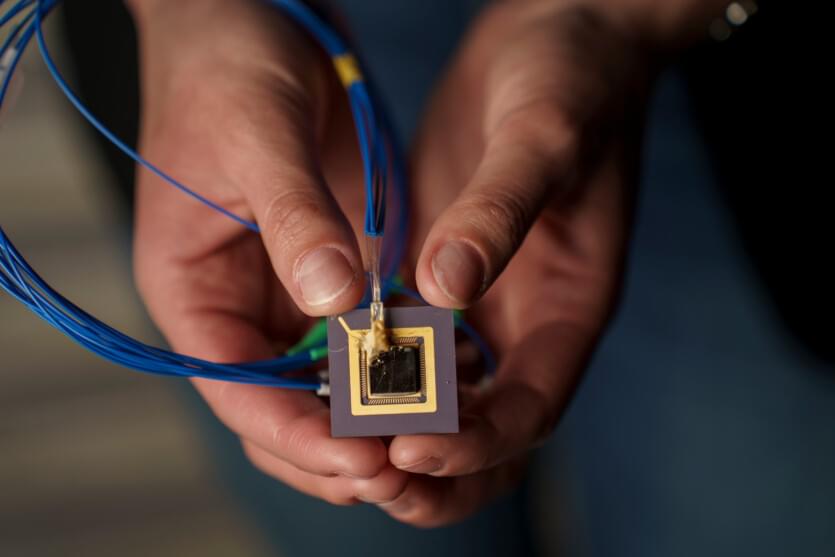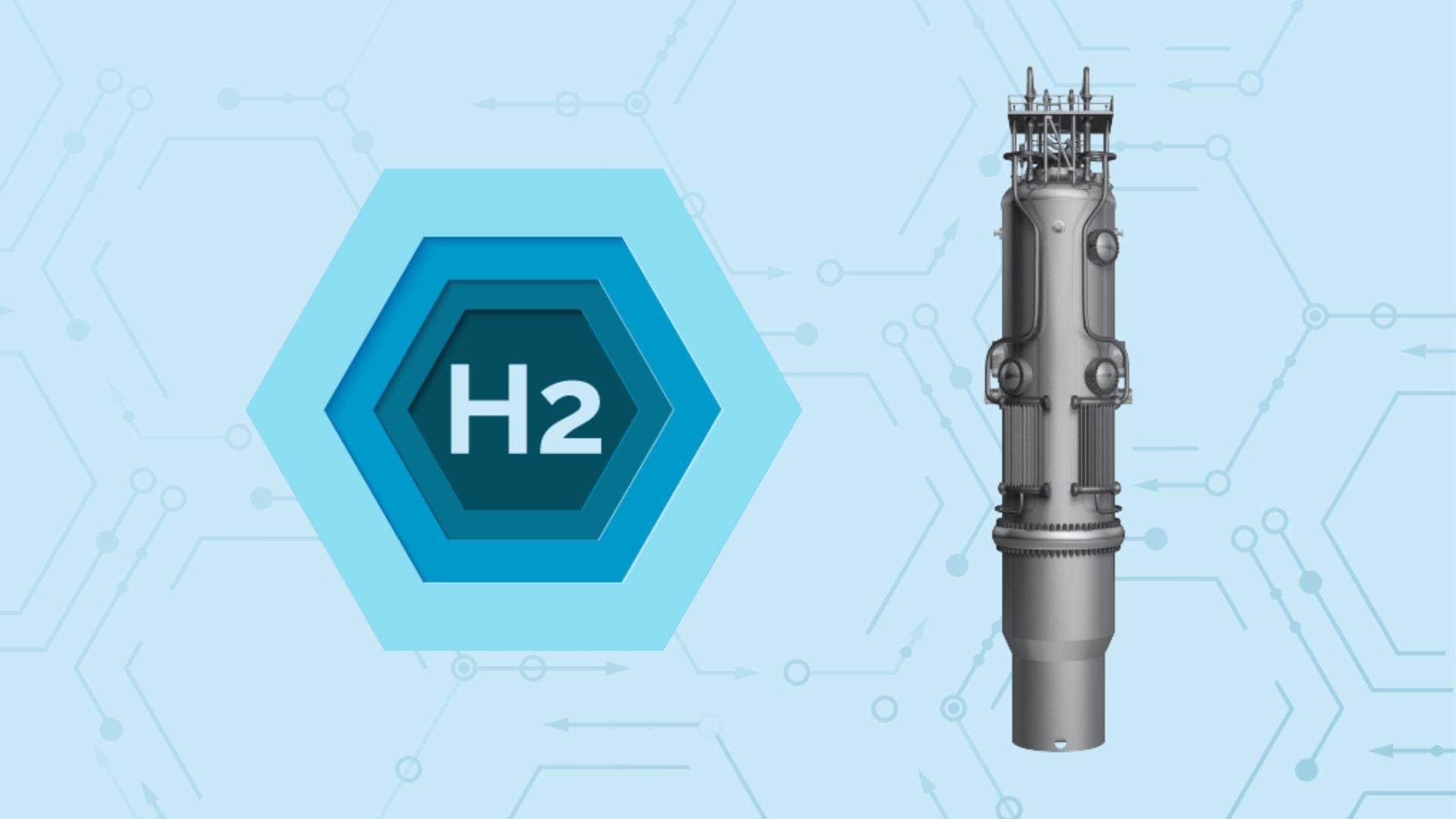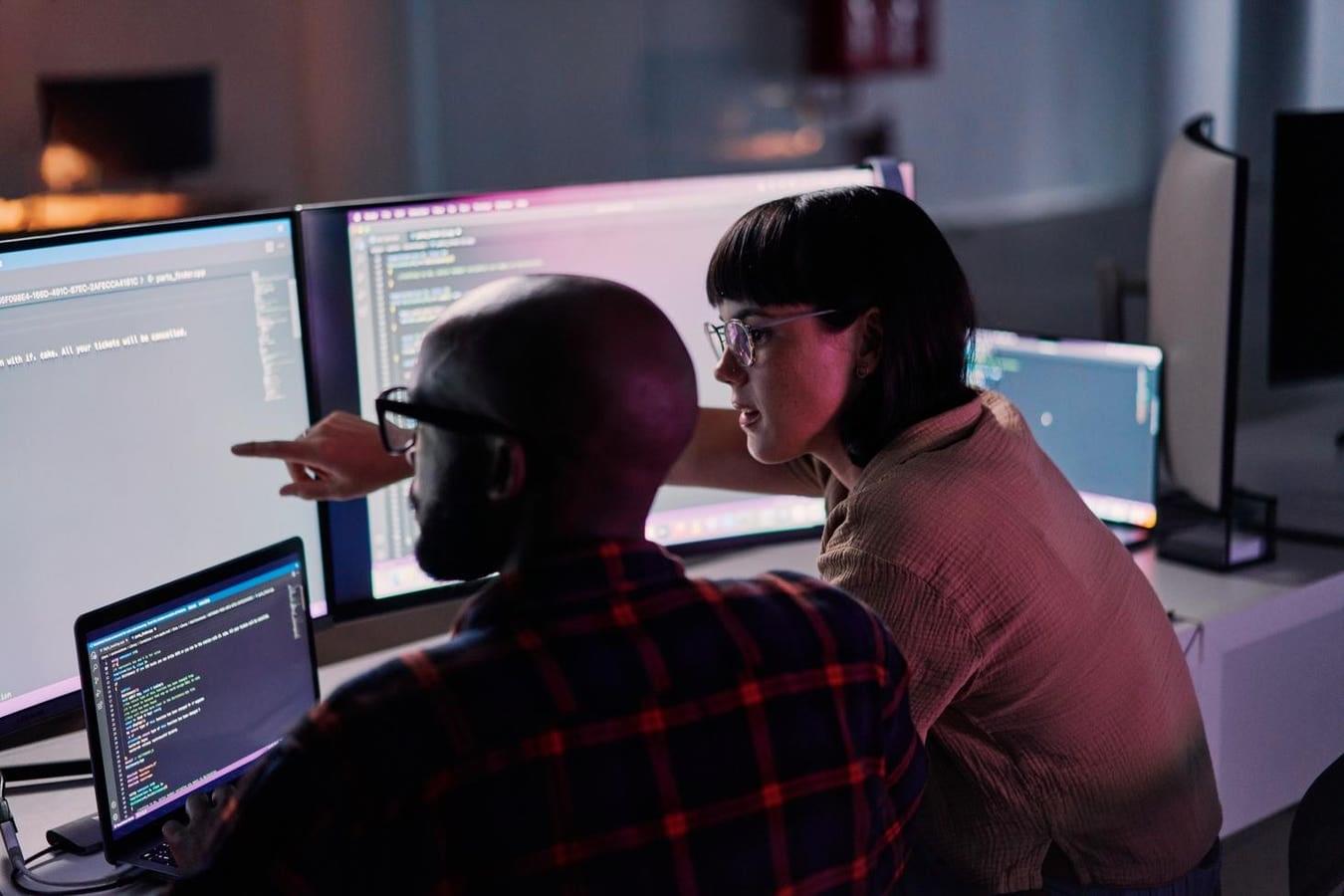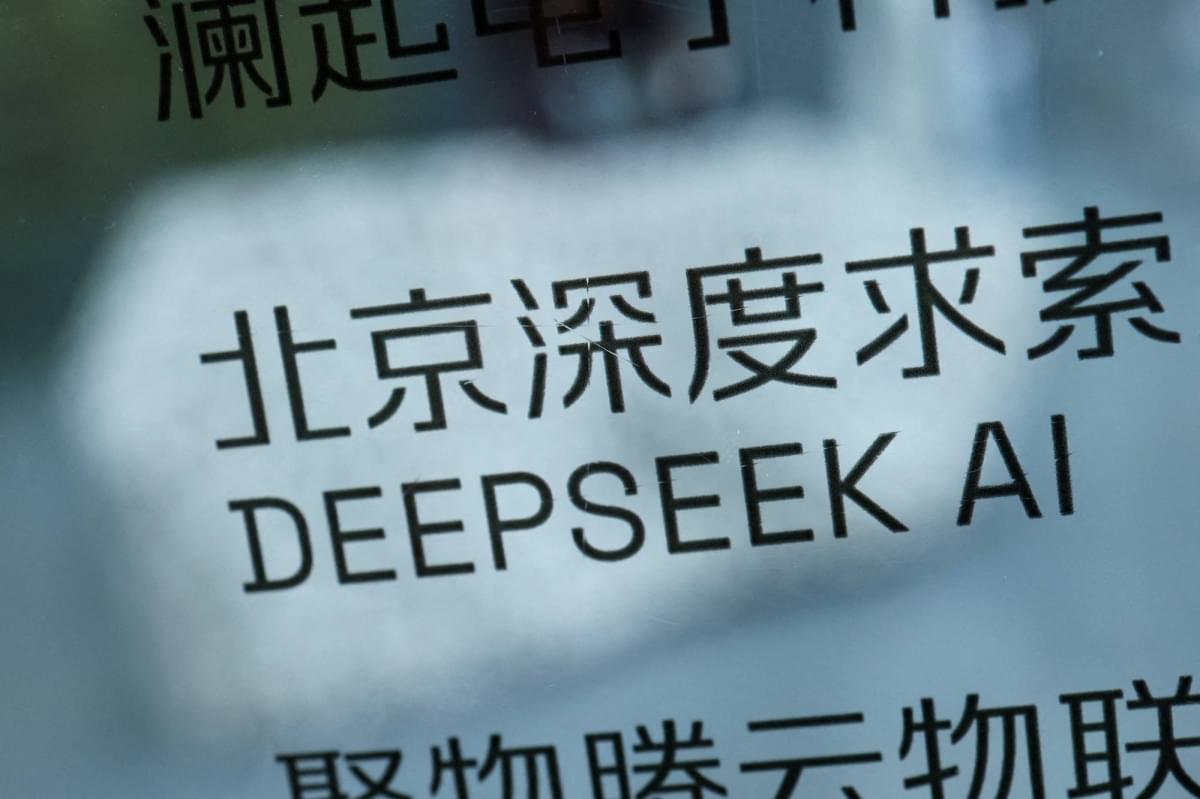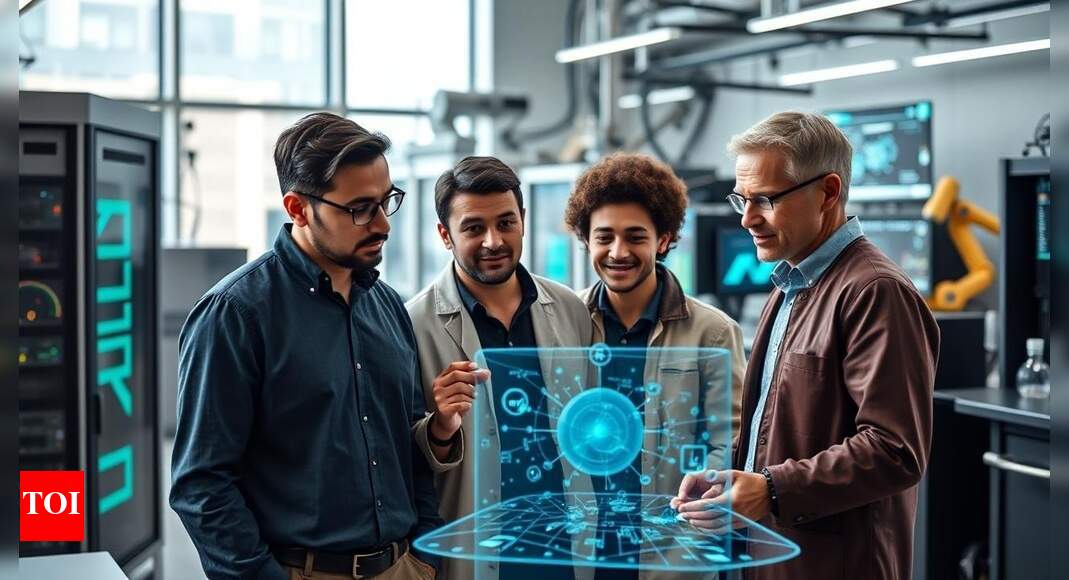A new blue fluorescent molecule set new top emission efficiencies in both solid and liquid states, according to a University of Michigan-led study that could pave the way for applications in technology and medicine.
Able to absorb light and emit it at lower energy levels, fluorescent molecules called fluorophores glow in OLED displays and help doctors and scientists figure out what’s happening in cells and tissues. They need to be solid in displays and many sensing applications, but liquids are typically preferred for biological uses. Most fluorophores don’t work well in both forms, but this one does.
The study, “Elucidating the molecular structural origin of efficient emission across solid and solution phases of single benzene fluorophores,” is published in the journal Nature Communications.
